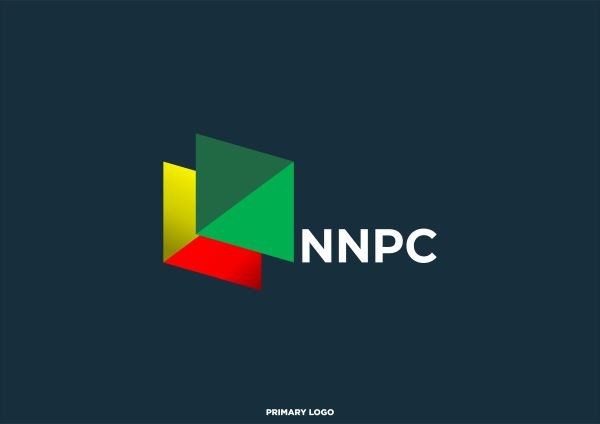NNPC, be honest with the Port Harcourt Refinery, by Luke Onyekakeyah
The recent media doubts about whether or not the Port Harcourt refinery is functional has brought to the fore the issue of honesty and trust on the part of the NNPC, the behemoth that controls the oil industry in Nigeria. NNPC and its opaque conduct have over the years made Nigerians to take whatever the organisation says with a pinch of salt. People don’t believe the NNPC, as it were, because the organisation has never lived to its bidding. Rather than make Nigerians leverage on the huge oil wealth like its counterparts in other countries, the NNPC has, instead, contributed, in no small measures, in impoverishing Nigerians. The billions of petro-dollars from Nigeria’s oil have, over the years, vanished into private pockets, leaving Nigerians in penury. As it were, the NNPC is synonymous with everything that is bleeding Nigeria.
It is on that ground that the recent news from the NNPC that the old Port Harcourt refinery has resumed operation after many years of shut down was received with mixed feelings. A section of the media debunked the news, doubting the veracity of the NNPC’s declaration, moreso, as similar declarations have been made severally in the past without any result. Besides, if the Port Harcourt refinery is really working, the result ought to be seen in the availability of petrol with low price and reduced importation of petroleum products. But so long as none of these has happend, there is reason to doubt NNPC’s claim.
There are four public refineries in Nigeria located in Port Harcourt, Warri an Kaduna that are supposed to be functional. Unfortunately, these refineries have remained a baggage to the country. Rather than be productive and benefit the country, they instead turned to drain pipes through which billions of dollars have been siphoned in unproductive series of turn around maintenance (TAM). Consequently, rather than function and serve the purpose for which they were built, the refineries have practically, remained comatose, which is why the country is neck-deep in the importation of refined petroleum products. As a matter of fact, there is a petroleum importation rack with every Tom, Dick and Harry now importing fuel. The public expect the refineries to be working and producing petrol, but the truth is not emerging as to the true state of the refineries. The NNPC remains opaque, no one knows when it is telling me truth.
Reports say the Port Harcourt refinery reopened in November, 2024 after the $1.5 billion loan approved by the Federal Government in 2021 for a comprehensive rehabilitation of the refinery has been judiciously spent. This happened after several postponements. As would be expected, President Bola Tinubu expressed his profound joy at the reopening of the refinery, describing it as another remarkable achievement of his administration. But it is not the Tinubu administration that approved the loan and commissioned the rehabilitation project ln in 2021. It was the Buhari government.
This notwithstanding, the NNPC in a twist said the Port Harcourt refinery is yet to begin bulk sales, nothing that the products the refinery sells currently originate from the Dangote Refinery and it includes applicable fees by NMDPRA. That being the case, it is pertinent to ask what is the true state of the Port Harcourt refinery. Is the refinery truly rehabilitated and productive at full capacity? To what extent is the Port Harcourt refinery alleviating the current high cost of petrol and other products? The NNPC should be honest to let Nigerians know the truth about the refinery. The contrary report that the refinery stopped loading fuel barely one month after it was declared open should be clarified to avoid doubts and suspicion.
For instance, there are insinuations that the prospect of the refinery running at full capacity is in doubt. Sources say it would best reach 40 – 50 percent of capacity, which would focus mainly on petrol deliveries.
It would be recalled that late in November 2024, the NNPC said it had restarted its 210,000 b/d Port Harcourt refinery after three and half years offline. It said product loading had begun after the plant’s smaller 60,000 b/d capacity crude dislilation unit (CDU) came into operation. The gradual restart had been planned by the Italian engineering firm, Maire Tecnimont, which has been rehabilitating the plant under a $1.5 billion contract. A number of deadlines had been announced by the NNPC that failed. It is expected that refined products from the Port Harcourt refinery will add to the petrol being supplied from the 650, 000 b/d Dangote Refinery. Also, the rising importation would stop.
Nigerian downstream regulator, NMDPRA head, Farouk Ahmed reportedly said products from the Port Harcourt refinery will be made available nationwide and would trigger price competition. The National Bureau of Statistics (NBS) reported an average national gasoline price of 1,185/l for October 2024, a rise of 88 percent on the year and 15 percent from September. The price of diesel, which has been deregulated since 2003, was on average 1,441/l in October, NBS said it upped by 43 percent on the year and by 2 percent on the month. The Dangote Group responded by dropping its ex-gantry gasoline prices from Ñ990/l to N970/l. Importers of petrol who have braced to compete with Dangote on product pricing may face more pressure with the Port Harcourt refinery coming on line.
As part of the total revamping, President Tinubu and NMDPRA have reportedly urged NNPC to bring back online its 225,000 b/d Warri and 10,000 b/d Kaduna refineries, which have been closed since 2019. NNPC has, therefore, opened a combined tender for operating and maintaining these plants. The outcome for a similar tender for Port Harcourt is unclear. The projected outcome is that Nigeria would become a net product exporter when the four refineries come online. That would make export a vital component of Nigerian refineries. One source said “The patronage for petroleum products is low and Nigeria is oversupplied.” This is attributed to the latest Dangote price cut to compete with imports and weak demand
The Port Harcourt refinery was shut down in 2020 after years of low capacity utilisation. NNPC had once said that it expects the initial 60,000 b/d phase to produce 12,000 b/d of gasoline, 13,000 b/d of diesel, 8,600 b/d of kerosene, 19,000 b/d of fuel oil and 850 b/d LPG in the. first year of resumed operation.
It is heartening that after 30 years of dormancy, the old Port Harcourt refinery, which has a unique configuration was reopened amid shock by forces opposed to the revival of the country’s refineries. The refinery is currently producing straight-run gasoline (Naphtha), blended with 1.4 million litres of petrol daily. NNPC has roundly repudiated attempts by skeptics to discredit the accomplishment.
The Port Harcourt refinery in Eleme is a sprawling facility divided into a 60,000 b/d old refinery and a new unit with capacity to produce 150,000 b/d. The old refinery, operational since 1965,:is Nigeria’s first refinery, had remained idle since 1990, when the newer unit became the primary production hub. The Port Harcourt refinery would be the second petrol producing refinery after the Dangote Refinery commenced PMS in September 2024. It.is the hope of Nigerians that the high cost of petrol and other products would crash if the country could refine its own fuel and curb the importation of refined products.
Dr. Luke Onyekakeyah is a public affairs analyst








